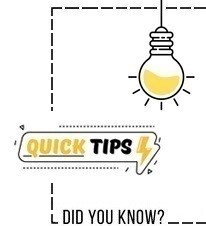Prunus Subgenus Cerasus Plant Tissue Culture
 Cerasus plant with gentle pink flowers.
Cerasus plant with gentle pink flowers.
Prunus Subgenus Cerasus plants are widely grown
worldwide and have high ornamental value.
Our plant tissue culture technology can produce large quantities
of seedlings to meet the garden market's demand for
flowering cherries.
The collective name for all plants of the Rosaceae (Rosaceae) genus Prunus (Prunus Subgenus Cerasus) is flowering cherry. Flowering cherry is a kind of woody plant with ornamental and edible properties, with about 150 varieties,mainly distributed in the northern temperate zone, Europe, Asia, and North America.
Flowering cherry is remarkably adaptable, with open branches, large flowers when blooming, umbels, white or pink flowers,and is an essential garden ornamental tree species in early spring. At the same time, its bark, wood, and petals can extract various natural compounds, which can treat cough, fever, etc.
Tissue culture service
The traditional plant propagation techniques of Prunus Subgenus Cerasus are mainly seed propagation, graft propagation, and cutting propagation. However, the speed of these technologies is slow, and pathogens such as viruses and fungi are easy to accumulate in plants, resulting in decreased plant vigor and stress resistance.
With the development of biotechnology, Lifeasible provides you with Prunus Subgenus Cerasus tissue culture services with fast reproduction speed, a short seedling cycle, and excellent genetic traits.
To address frost injury to buds from low temperatures, we recommend selecting young stem segments in spring or dormant buds in winter as explants.
We also recommend that you select young plant organs such as leaves, petioles, stem segments, and flower stalks as explants to induce adventitious buds directly or indirectly through the induction of healing tissue.
- Selection of culture medium
The common media used for tissue culture of Prunus Subgenus Cerasus plants are MS, WPM, QL, 1/2 MS, etc. If we choose the MS medium, we will reduce the NH+ concentration of the medium to prevent the browning and death of the explants.
- The ratio of plant hormones
We will add cytokinin (BA or KT) and growth hormone (IBA or NAA) to assist tissue cultivation. After a long period of practice, we have optimized the hormone ratios suitable for the bud germination of most Prunus Subgenus Cerasus plants. This can ensure the differentiation rate of adventitious buds of more than 95%.
- Plant growth and differentiation
Our plant tissue cultivation team has found that adding organic components to the cultivation process can promote plant growth and differentiation. Benzenetriol promotes the proliferation and rooting of adventitious shoots; sodium nitroprusside (SNP) effectively promotes the induction of healing tissue, the proliferation of regenerating shoots, and the rooting of plants; silver thiosulfate (STS) promotes the regeneration rate of adventitious shoots.

Contamination, browning, and vitrification are the main problems plaguing cherry tissue culture. For external contamination, we generally use alcohol and ascorbic acid with a small amount of surface-active substance to disinfect.
The browning phenomenon is related to the oxidation of polyphenols in plants. We can effectively improve the browning phenomenon by lowering the pH value, replacing the fresh medium, and appropriately darkening.
To solve the vitrification phenomenon, we will appropriately increase the agar, sucrose, and Ca2+ concentration in the medium, decrease the cytokinin and NH+ concentration. Meanwhile, AgNO3 and activated carbon were added to the medium.
If you are interested in our services, please feel free to contact us for more information or to discuss in detail.
You want to sign a confidentiality agreement.
You have a specific plant species for your experimental needs.
You have a reliable and relevant cooperation project to discuss.
You are very interested in our project or have any questions.
You need an updated and detailed quotation.
For research or industrial use.

 Cerasus plant with gentle pink flowers.
Cerasus plant with gentle pink flowers.

